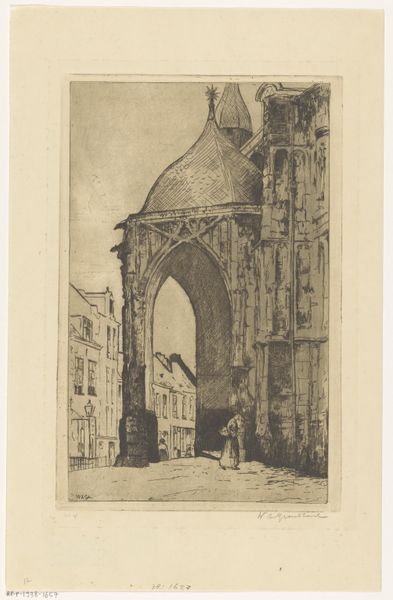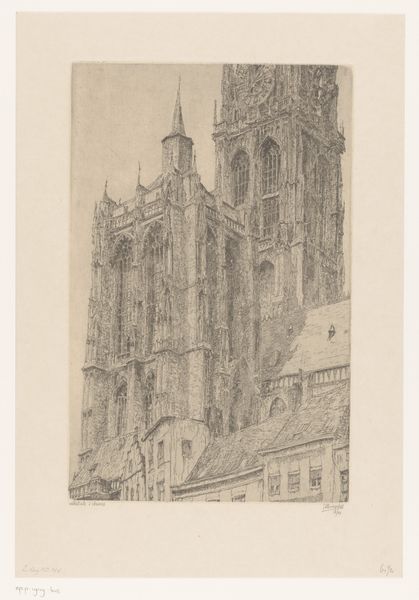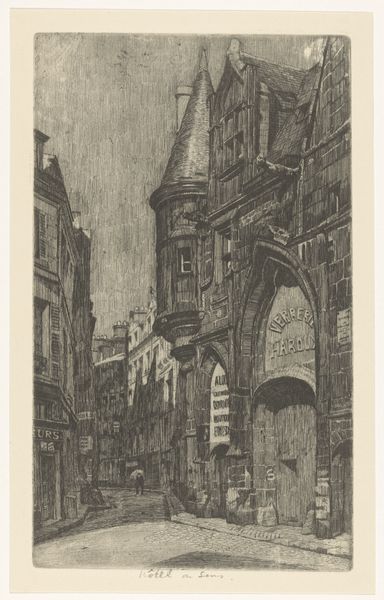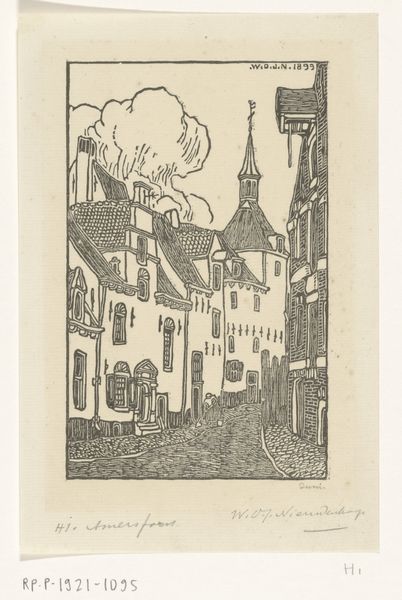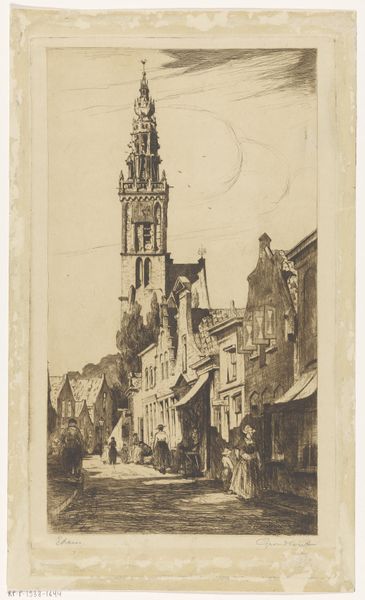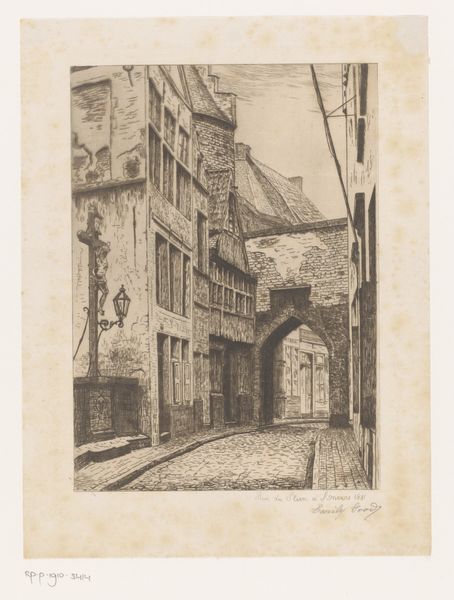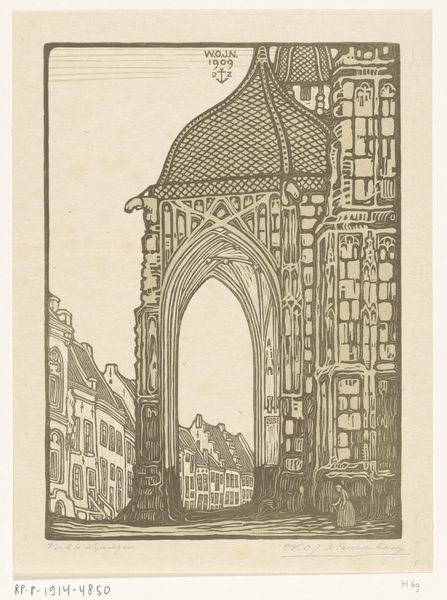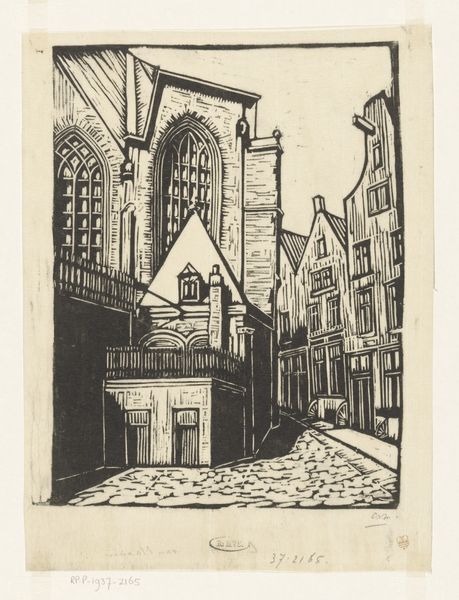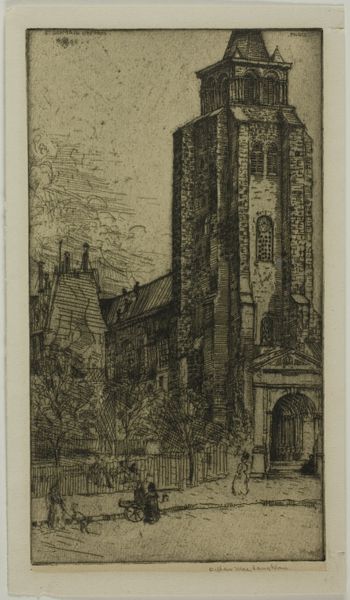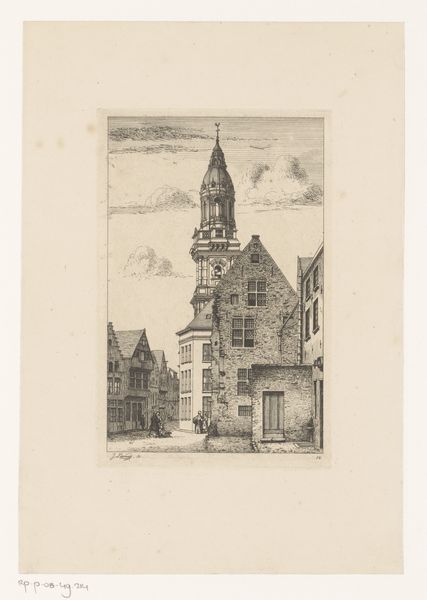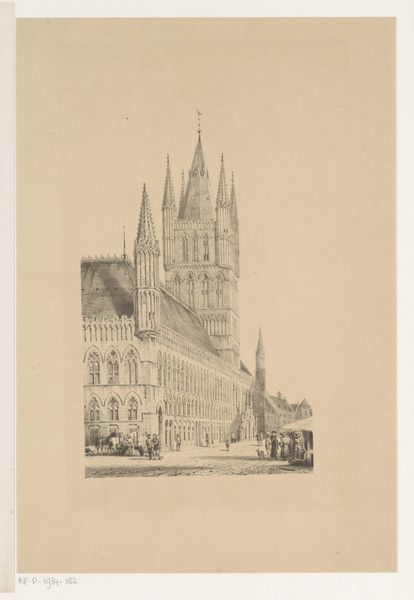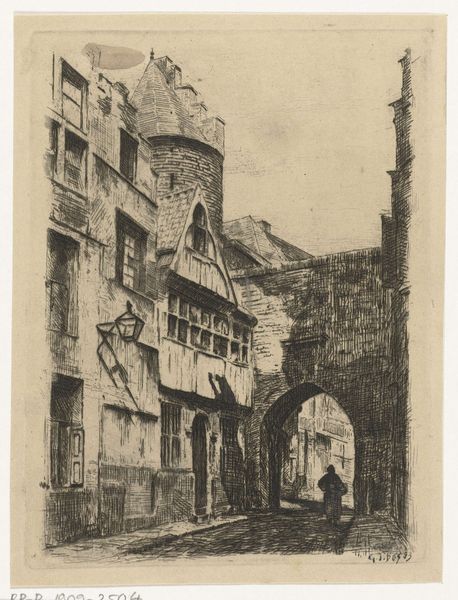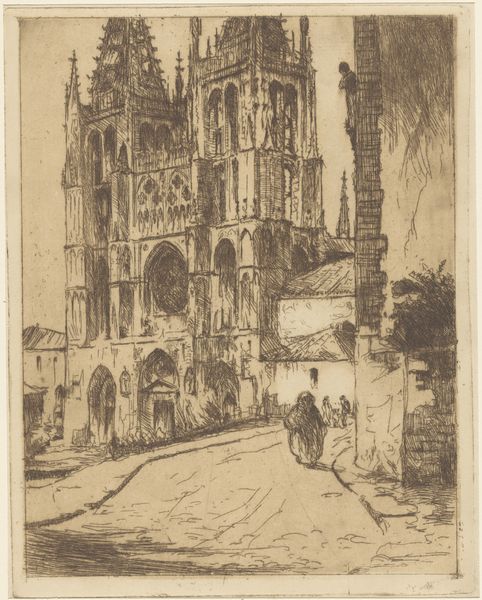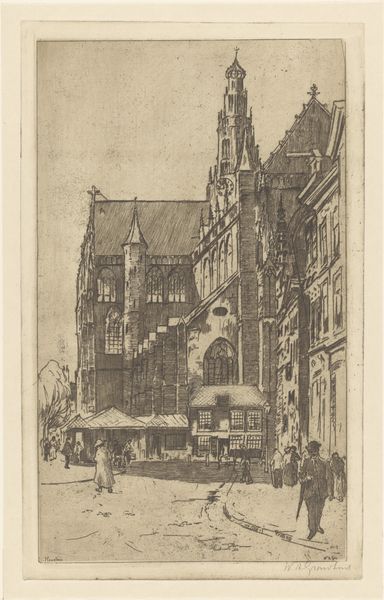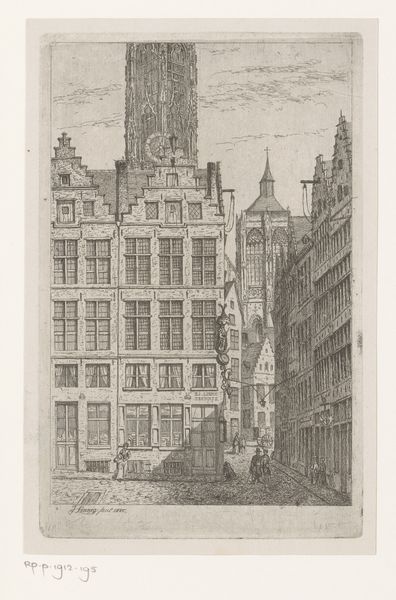
drawing, ink
#
pen and ink
#
drawing
#
pen drawing
#
dutch-golden-age
#
ink
#
cityscape
#
genre-painting
#
modernism
Dimensions: height 320 mm, width 157 mm
Copyright: Rijks Museum: Open Domain
Curator: This is Ferdinand van Wolde's "Kalenderblad april met stadsgezicht in Deventer," a calendar page for April, created in 1923. It appears to be ink on paper. Editor: The weight of the image is surprising. There's a somber quality to the depiction of the Deventer cityscape. The sharp verticality of the cathedral towers, coupled with the dark shading, lends the piece a certain gravitas. Curator: Van Wolde situates the urban landscape of Deventer within the framework of modernist anxieties, exploring the intersection of industrialization and traditional life. Notice the presence of figures engaged in commerce and labor, perhaps speaking to changing socio-economic dynamics. Editor: The texture! It’s created through dense cross-hatching, giving a tactile, almost three-dimensional quality to the buildings and street. I think the way the artist uses the limited palette to suggest form and depth is remarkable. It calls attention to the surface, too, the visible grain of the paper. Curator: Precisely. This close attention to form, material and historical context points to Van Wolde’s broader engagement with power structures present within urban spaces. The calendar format suggests an awareness of temporal structures impacting labor, identity, and artistic expression. Editor: Though functional, it seems the grid imposes order upon what may otherwise be a more dynamic reality. It contrasts so much with the free, painterly depiction of the buildings, even though the buildings are quite structured as well. Curator: Absolutely. Through exploring how the image both challenges and perpetuates systems of representation, Van Wolde offers us critical insights into the negotiation of place and time in the early 20th century. Editor: It leaves me with an appreciation for how graphic precision and nuanced atmosphere work in harmony, providing more depth than it looks like from a distance. Curator: Yes, and it prompts reflection on how even a utilitarian form can become a space for profound socio-historical commentary.
Comments
No comments
Be the first to comment and join the conversation on the ultimate creative platform.
